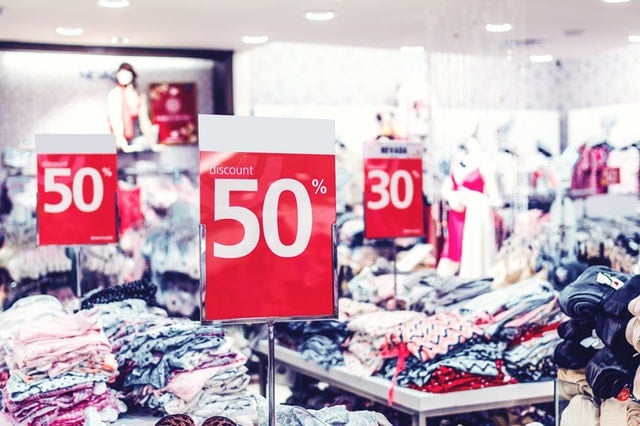Beacons form a part of indoor and outdoor positioning systems and are a part of the Internet of Things (IoT) technologies. These are essentially small Bluetooth devices that can send alerts to smartphones that are near to or in proximity to it. They transmit low-energy Bluetooth signals which target smartphones within a certain range of distance. By detecting smartphone signals in their proximity, preset conditions are triggered and they deliver informational, conceptual & personalized experiences.
These devices are cost-effective, easy to deploy and very effective. Beacons are popular because of the way they can be used to engage with the customer, especially in the retail sector. These devices provide information and navigation to smartphone users.
Unlike other technologies like Augmented or Virtual reality, Beacon technology is straightforward to use and is very effective. It has a low price tag and provides retailers with new, and exciting ways & to engage customers non-intrusively.
The concept of Beacons is quite old. Beacon technology was introduced by Apple in 2013 and was called iBeacon. It was soon followed by Google, and they named it Eddystone.

How does Beacon technology work?
Each device has a Central Processing Unit (CPU), a radio & batteries, and continuously broadcasts a radio signal. Often small lithium chip batteries are used or they run via connected power like USB plugs. They may even include unique add-ons like accelerometers, temperature sensors etc. This signal is picked up by smart devices, usually a smartphone via Bluetooth. This signal identifies itself to the smartphone by giving out its ID number or an identifier.
The smartphone then sends this identifier or ID number to the cloud server. The server checks the action assigned to that ID and responds by sending predefined messages to the smartphone. These could be sending a coupon or offering some other service. The possibilities seem endless. The result is that the customer is now engaged with the retail store in a very non-intrusive but a very personal way. But to connect these beacons to the smartphones and therefore the customer, apps related to that specific store, mall and more have to be installed on the smartphone.
There are many types of Beacons in the market. Some of them are
- Standard beacon: Used for proximity and tracking solutions.
- Portable beacons: Used for asset tracking and proximity solutions.
- USB beacons: Used for proximity and tracking solutions.
- Video beacons: Used to deliver contextual visual information.
- Sticker beacon: Used for asset tracking.
- Parent beacon: Used to track other beacons and gather data to store in the cloud etc.
Advantages of Beacon In Retail
Retail software development services can offer many advantages to using this technology. Some of the advantages are
- Gathering or acquisition of information of and from customers: Beacons can gather information about how many times a particular customer comes to the store, what they buy or where the customer is spending time to target items specifically. It can help generate effective promotions based on data gathered.
- Increasing point of sale traffic: Since Beacons gather relevant information, they can also be used to give targeted deals like special discounts or coupons. Such notifications help in increasing the point of sale traffic.
- Increase in the potential customer base: Adopting royalty programs and rewarding customers while they are in the store via beacon notifications helps in not only retain customers but also helps increase in customer base.
- Personalized relationship with customers: Such programs and notifications are a very personalized way of interacting with the customers. Different customers get different notifications based on their shopping style and requirements. It’s a unique way for stores to reward customers in a personalized way.
- Track efficiency of staff: Beacons can be used to track how much time employees spend in which area or department. It can also send notifications for restocking.
- Offering in-store navigation prompts: Beacons can give in-store navigation prompts to steer customers to areas where they have been shopping before or are likely to buy from based on past data.
Examples of Beacon In Retail
Some companies like Google and even sports stadiums are using this technology to leverage its unique marketing potential.
- In India, Google uses beacons to target commuters. When a commuter is near the beacon, a notification would be sent to them and offer free WiFi. This resulted in approx 10% click-through rates for Google.
- Beacons are used in buses in Luxembourg. They push bus schedule notifications to commuters. These notifications can also be read aloud and make it easy for visually challenged people.
- Levi’s Stadium in San Francisco, USA, used beacons to make it easy for people visiting the stadium to find seats. They used beacon marketing technology and the app was downloaded approx 183,000 times. It also led to a $1.25 million increase in revenue.
- A hypermarket in Ukraine, with around 31,000 sq.ft. of space, used beacons for promoting promotions and way-finding around the store in 2016.
- Allrecipes, a grocery store in Ohio, USA, provides cooking information using beacons. Notifications offered meal recommendations when the customers visited the store and were more likely to buy based on these recommendations.
To summarize, the beacon technology might not be as futuristic as it sounds. With the fierce competition, businesses are looking for other avenues to get an edge over the customers. Therefore, many retailers and companies are adopting technology to improve customers’ shopping experiences. That way, they can meet customer demands better, besides creating a stellar customer experience.



